#Babylonian astronomy
Text


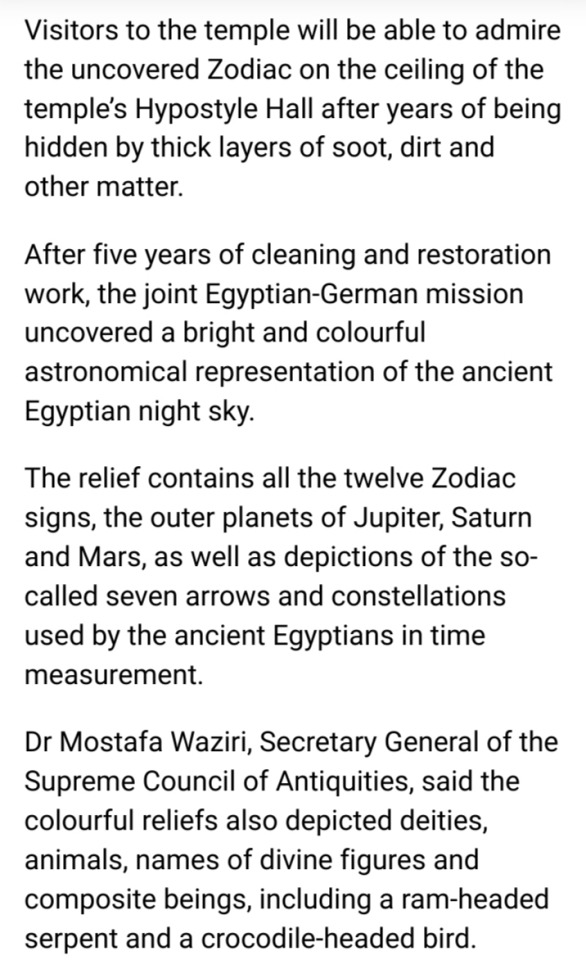

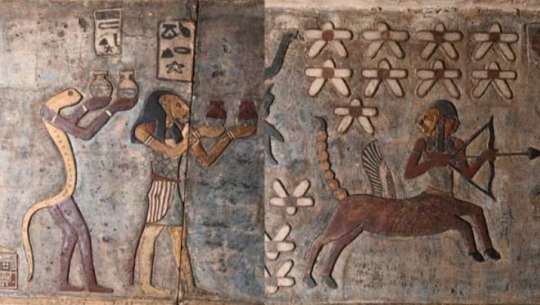

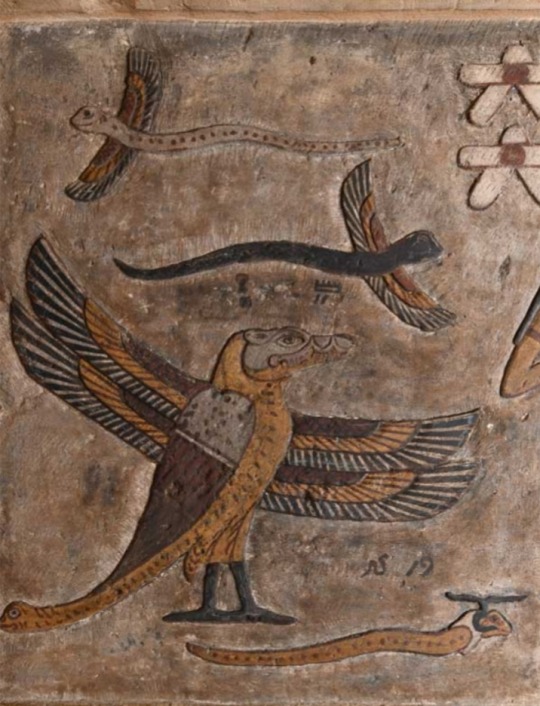
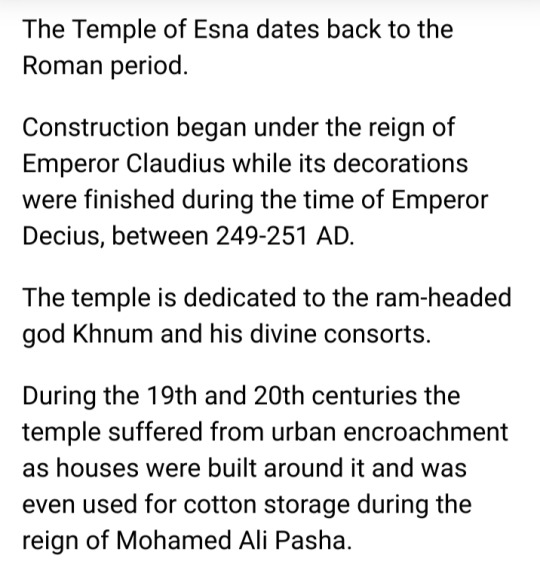

#Temple of Esna#Luxor#Zodiac#Ministry of Tourism and Antiquities#Hypostyle Hall#zodiac signs#Supreme Council of Antiquities#Babylonian astronomy#American Research Centre#Emperor Claudius#Emperor Decius#Khnum#archaeology
123 notes
·
View notes
Text
youtube
The eclipse is almost here and many of us will find ourselves thanking modern technology for the ability to predict solar eclipses so reliably- but should we? Find out about the ancient Babylonian method of predicting eclipses!
#eclipse#eclipse 2024#babylonians#space#scishow#Youtube#babylon#ancient babylon#my post#cosmos#eclipse2024#astronomy#galaxy#science#nasa
6 notes
·
View notes
Text
The World's Oldest Writing
In early 2016, hundreds of media outlets around the world reported that a set of recently deciphered ancient clay tablets revealed that Babylonian astronomers were more sophisticated than previously believed. The wedge-shaped writing on the tablets, known as cuneiform, demonstrated that these ancient stargazers used geometric calculations to predict the motion of Jupiter.
Today, the ability to read cuneiform is the key to understanding all manner of cultural activities in the ancient Near East—from determining what was known of the cosmos and its workings, to the august lives of Assyrian kings, to the secrets of making a Babylonian stew. Of the estimated half-million cuneiform objects that have been excavated, many have yet to be catalogued and translated.
Here, a few fine and varied examples of some of the most interesting ones that have -
0 notes
Text
Ancient Astrology: Unleashing the Power in the Modern World

Ancient astrology refers to the practice of studying celestial bodies and their movements to gain insight into human affairs and the natural world. It has its roots in various civilizations dating back thousands of years, including ancient Mesopotamia, Egypt, Greece, and India. In ancient times, people observed the positions and movements of the sun, moon, planets, and stars, believing that they held significant influence over human lives and events. Astrologers developed intricate systems to interpret these celestial patterns and make predictions about various aspects of life, such as personal characteristics, relationships, health, and even political and societal events.
Article Source Link
#ancient astrology#astrology#hellenistic astrology#vedic astrology#the astrology podcast#babylonian astrology#traditional astrology#greek astrology#astrology podcast#what is astrology#nightlight astrology#ancient#astronomy#ancient astrology vol 2#history of astrology#ancient astrology volume 2#ancient civilizations#ancient egyptian astrology#ancient vs modern astrology#demetra george ancient astrology#is astrology real#ancient history#weekly horoscope#7th house#7th house astrology#horoscope#horoscopes
0 notes
Text
FIRST TOTAL SOLAR ECLIPSE


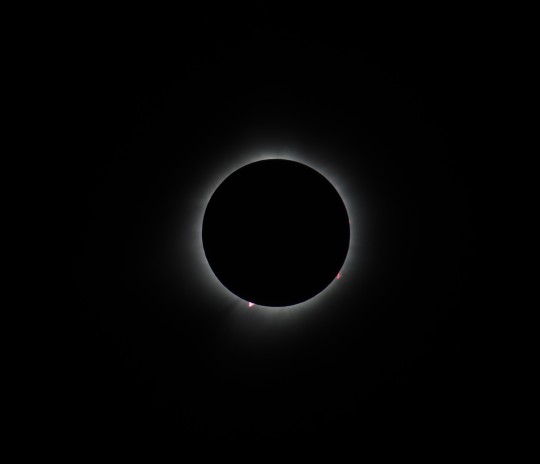

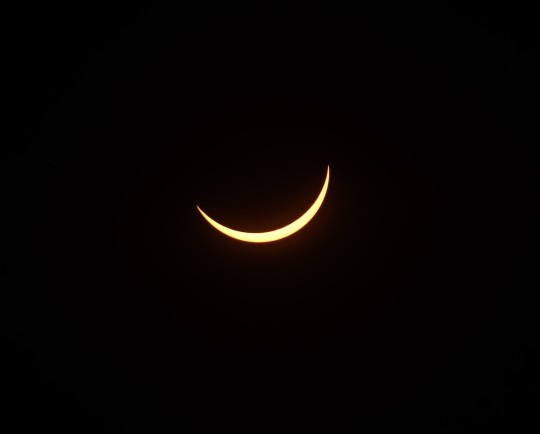
Images from my first total solar eclipse, depicting the outer corona, inner corona, prominent prominences, diamond ring, and the partial phase. Photos taken by Dan.
A black sun. Never had I seen a black sun, that insignia of melancholia that will forever remind me of Kristeva, which will forever remind me of M’s suicide—it was one of the few books M had with her at the very end, the book that her mother believed was the key to why she did it.
Black sun. On the day of—or day after—M’s death anniversary. I had been weeping for days when I found myself beneath that darkening sky.
*
What’s the difference between a partial and a total eclipse? I vaguely remember going onto the playground with some glasses as a child, but I don’t remember what I saw in the sky. What’s the big deal? The sky goes dark for a few minutes. It can’t be much different from the onset of night.
Wrong.
The rhapsodic scientists I listened to on various podcasts convinced me that there is really no comparison between a partial and total eclipse. I tried to hatch a last-minute plan to get myself in the path of totality. In the days leading up to the eclipse, I would be at the French King Bridge for M’s death anniversary. The only person I knew in Western MA, besides M’s mother, was my poet friend Ethan. So I asked him if he had a plan to see the eclipse.
I did not know, when I texted him out of the blue, that his parents lived in the path of totality in northern Vermont, that his father Dan was an astronomer (communist astronomer!) and eclipse chaser (this was his 14th eclipse), that Dan had even organized the local viewing event and wrote a book on the history of astronomy. At Ethan’s parents’ house there were literally photographs of eclipses mixed in with the family photos (see below). His father had even built a little observatory on his land. I had, in the most haphazard fashion, found the perfect guide to my first total solar eclipse.
Dan brought his equipment to the eclipse viewing: cameras, filters, binoculars, and a $4000 hydrogen alpha telescope that we used before the eclipse to look at the sun’s prominences and a sunspot on the surface. He enthusiastically answered all my questions. How had the Babylonians worked it out so long ago? Why does the wind pick up when the eclipse begins? Why is the sun’s corona so much hotter than the sun’s surface? (It’s still a mystery to the scientists…) Why why why. (People often tell me that I always ask a lot of questions—almost like an eternally curious child.)
The eclipse. It is not like the dimming of sunset, with its orange hues and plunge into the horizon, the low angle. It is a light unlike any light I have seen before, a strange dream-like atmosphere, a gray yet shimmering unreality, the air suddenly cold, the birds in a confused tumult. The uneven temperature of the atmosphere makes the wind pick up as the moon slowly covers the sun. Though the light was not the gold of sunset, you could see a band of orange on every horizon like a 360 degree sunset, an eerie gloaming that electrifies your skin.
A silence descended on the field as the moment of totality approached. Then, audible gasps—we couldn’t believe what we were seeing. I think the first thing I said was, “Holy. Shit.” Nothing prepared me for the numinous beauty of the sun’s corona, those elegant wisps of bright white light haloing the black sun. I think it’s probably the closest one can come to seeing God while alive on this earth. I cried during totality while observing the patterns in the corona through binoculars. A beautiful pink arch of plasma (a prominence) was visible toward the bottom of the sun. Dan pointed out Venus in the sky.
In the center of that black hole
there is an abyssal silence
I don’t know how to describe it. Celestial indifference to human endeavor, human emotion. A kind of coldness in that heat, the heat of the corona, beyond even the fires of Hell. Then I can hear the angelic squall of the corona ringing over the landscape. It is a sound full of grace even as it cannot be called happy.
I can see why the ancients might interpret an eclipse as an augur of something deeply ominous, perhaps apocalyptic. The experience is, at once, sublime, ecstatic, and deeply unnerving—all your perceptual faculties are telling you that something is wrong. The ongoingness of the world and its rules cannot be taken for granted, for the sun went black, not in my dream, but in the afternoon sky.
And just as soon as it began, it was over. We had almost 3 and half minutes of totality. I was surprised by how quickly the sky brightened, how much light we get when the sun is almost completely covered.
One day the moon will float away. There won’t be any more total solar eclipses. Be grateful you were alive during this slice of cosmic time.
youtube
This is my favorite scene in all of cinema, from Béla Tarr's Werckmeister Harmonies. Watch drunkards reenact an eclipse in a drab Hungarian bar...

Ethan and communist astronomer dad!
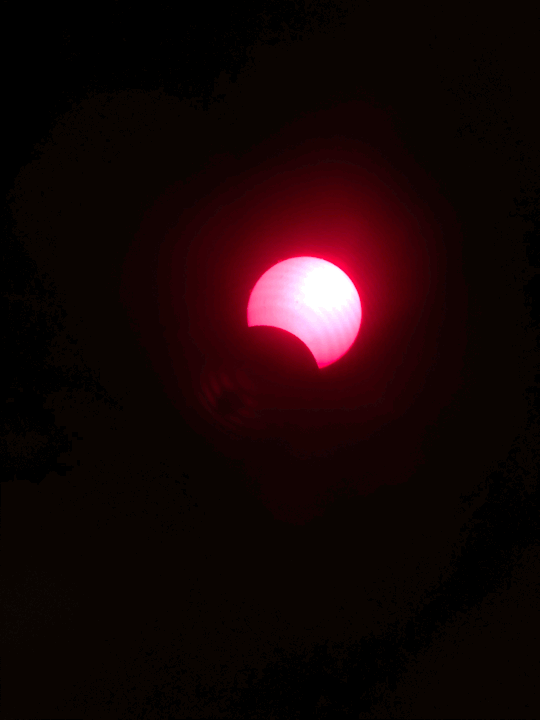


I even got eclipse-branded maple syrup (peak Vermont)

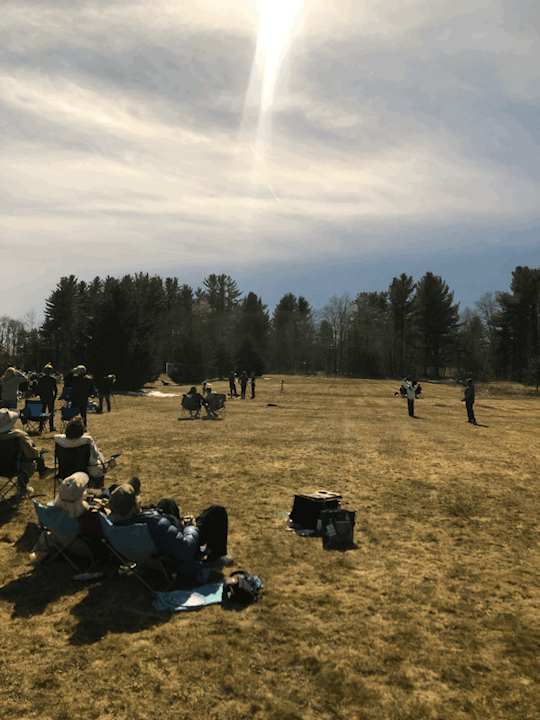

#eclipse2024#eclipse#total solar eclipse#solar eclipse#Werckmeister Harmonies#film#bela tarr#great american eclipse#béla tarr
38 notes
·
View notes
Text
July Kinkfest Days 4 & 5
The Sandman || Dreamling (Dream of the Endless/Hob Gadling) || Rated E || 939 words
Prompts: Possessive Sex | Body Worship | “I had a dream about you.” - Exhibitionism | Aftercare | “I’ve always wanted to try this.”
Warnings (in addition to the prompts above): getting together, jealous Dream, rough sex, biting and other post-sex superficial injuries
Author's Notes: Two days combo platter! Five out of six prompts! Whoo!
As his lover dozes, Dream traces the marks left on Hob’s skin. Not the scars, but the recent ones, bruises and welts and scrapes, left not so long ago by Dream’s fingers and lips and teeth. And as he touches each one he checks that it is superficial, urges each gently into healing, and memories float to the surface.
It started with one of the New Inn’s regulars, Eliot Sutton, a New Yorker at the end of two years of post-doctoral work in astrophysics and cosmology, who had sought work abroad as he was fleeing his broken engagement and family strife. Dream knows these details immediately upon looking at the man, but what actually matters is that he and Hob are in the back of the pub, sharing a table and a pint, papers and books spread out before them, working in a familiar and companionable silence.
On Hob’s hip, long finger-shaped bruises are starting to purple. Dream can hear the echo of Hob’s sob of pleasure, of relief, as Dream finally sinks his cock into his loosened, slick hole. “Yes! Sweetchristyes!”
As Dream gets closer to the table he learns more: Eliot Sutton has a black cat back at his apartment that he adopted from a local shelter because she was twelve and looked like she needed a friend. He has a collection of old manuscripts on Babylonian astronomy that probably should be in a museum. The man reaches to take a sip of his ale and spends a moment staring at Hob. Dream picks up the edges of an erotic daydream, no the memory of a dr-
“I had a dream about you last night.” The man interrupts Dream’s thoughts as much as Hob’s work and both stop mid-movement.
Long red welts along Hob’s back are receding, no longer as sharp-edged and raised as when Dream’s nails made them, scrabbling for purchase as Hob bent the Dreamlord in half as he fucked him with deep, rolling thrusts. “Let him see. Fuck, invite the entire college, the entire city… let them all see how I lose myself in you. Only you.”
“Did you now?” Hob takes his own pint in hand, downing a large swallow. “Let me guess, a nightmare about me, a lowly history professor, grading your uni papers?”
Eliot very clearly lets his gaze get dark, his voice suggestive. “Not quite. Although it did involve a desk.”
Hob blushes. “El…”
More nail marks, clear crescents in sets of four, overlap each other across Hob’s shoulders, a few crusted with dry blood. Dream cleans them with a careful touch and hears his own growls in his ears as Hob drops to his knees in front of him. “Is this how the most devoted priests feel when faced with their god?” He nuzzles into the base of Dream’s leaking cock, licks tentatively, making them both shudder. “Willing to exalt, to glorify, to praise, with mouth and tongue, with words and breath, with body and soul…” He presses the flat of his tongue to the underside, making Dream gasp and claw into his shoulders as he licks a line up to the tip. When next Hob speaks his lips brush the head with each word. “I would worship you, my Dream.”
Any further answer is interrupted when Hob catches sight of Dream in his peripheral vision and his face breaks into a smile wider than any he has seen directed at Eliot. “My friend!” Hob stands to greet him, to bring him to the table with a hand on his shoulder. “It has been less than a week since we last met! I was not expecting to see you so soon! Not that I am complaining, mind you – I welcome your presence, day or night.” Hob turns to his table-mate. “Eliot! This is my oldest and dearest friend D-”
“Morpheus.” Dream interrupts, putting out a hand to shake as is current custom. Hob blinks at Dream, confusion passing across his face for only the slightest moment, before he motions for Dream to sit with him in his side of the booth.
Eliot shakes Dream’s hand amiably enough, but his eyes narrow at how close Dream slides in next to Hob.
Smaller bruises litter the top of Hob’s shoulders, his collarbones, underneath his jaw. Dream touches each one and remembers its unique taste, remembers making them with his hungry mouth as he unbuttons Hob’s shirt. They are barely inside his flat, crowded into the corner behind the shut front door. “Oh fuck,” Hob moans, arching into Dream’s touch, tugging at Dream’s hair. “If only I had known, love… I would have ventured to make you jealous sooner!”
Eliot leaves not ten minutes later and Hob gives Dream a pointed look. “Was that really necessary?”
Dream stares right back. “He dreams of having you. Not just carnally. Intimate in all senses of the word.”
One of Hob’s eyebrows makes a break for his hairline. “And that is a problem because…?” But he must see something in Dream’s expression, because Hob leans in. “Does that make you…” Hob licks his lips and Dream’s eyes follow the motion of their own volition. “... are you jealous, Dream?”
The last bruise is a nebula of colors along the side of Hob’s nape, created through repeated attention from Dream’s mouth as he fucks Hob through another of his own orgasms. Hob’s cock has long since been exhausted, but still he pleads for Dream to take him, to fill him, to use him. Still he wishes only to be a vessel for Dream’s pleasure. So as Dream drifts downward, finally sated, he purrs into Hob’s ear. “Mine.”
164 notes
·
View notes
Text


Researchers have found the Pythagorean theorem on ancient Babylonian clay tablets that predate Pythagoras by 1,000 years!
The tablets were discovered in what is now Iraq and date back to the Old Babylonian period (1900-1600 BC).They contain mathematical calculations and diagrams that use the principles of the Pythagorean theorem to solve problems related to land surveying, construction and astronomy.
71 notes
·
View notes
Note
Miffu's gem shape is a star... was wondering what that was supposed to be. I guess Mifuyu is a shining moon star.
I have no idea if this was on purpose, but in Babylonian astronomy, the 8-pointed star was a reference to Venus, aka Ishtar. Ishtar/Venus was known as the Evening Star and Morning Star (thanks to its movement around the sun).


They look kind of similar to me.
although Ishtar' star also looks like this, which is less similar
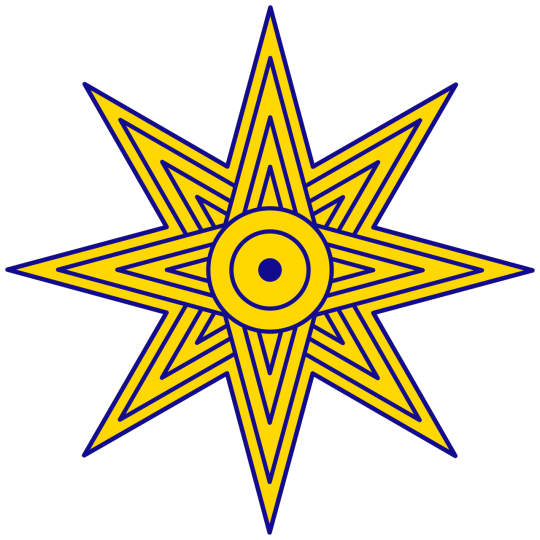
Anyways, if you're thinking that "hey wait, venus is a planet and not a star," keep in mind that "planet" means "wandering star."
24 notes
·
View notes
Text

“Mathematical Treatise” (or Almagest), written by Ptolemy in the 2nd c. CE, represents the culmination of ancient Babylonian and Greek mathematical astronomy, and it is a stunning achievement for its high degree of accuracy in predictions of the planet's positions. It was the basic astronomical guide for 1500 years!
This is a Byzantine copy of the 9th century, depicting the Zodiacs, months, days, and nights as women, and between them numbers that indicate the exact date and time that the sun enters a new zodiac. Helios (the Sun) is depicted as a king at the center with his chariot and white horses.
This is not an isolated example of this type of manuscript - this ancient Roman theme can be found from villas and sunagogues all the way to Lesnovo monastery and even post-Byzantine churches in Greece.
813-820. Vatican Library, Vatican
234 notes
·
View notes
Text
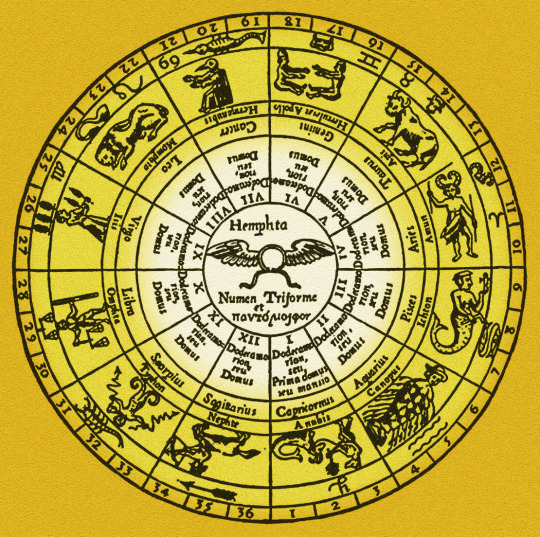
The Twelve Signs
“Hermes Hieroglyphic Plan of the Ancient Zodiac” from Athanasius Kircher Oedipus Aegyptiacus (1652)
15 notes
·
View notes
Note
hello! ive seen you talk about astrology a few times and i was wondering if you had any books or article that historicise the practice. most of what i can find is very vague, and starting off from a 20th century definition (¬ v critical). i'm interested in any period, im just trying to start to get a sense of its different uses & epistemological frameworks. thank you your bibliography work on here is very precious :)
ok there's a lot of writing on astrology so this is not comprehensive by any means. u should also keep in mind that historically (painting in broad strokes here) astrology and astronomy were not entirely distinct practices, both because the point of astronomical observations was often to make astrological predictions, and because most people practicing astrology were expected to at least present themselves as having the instruments and savoir-faire to generate their own astronomical data. the non-astronomer astrologer is kind of a special case. so, astrology will pop up in lots of texts about historical astronomy and cosmology, even if that's not the primary focus. i would honestly usually recommend such texts over ones that try to tackle astrology under the broader schema of 'occult sciences' (contested category).
misc astrology until 1800
"how to accurately account for astrology's marginalization in the history of science and culture: the central importance of an interpretive framework" by h darrell rutkin (early science and medicine 23: 3, 217–243. 10.1163/15733823-00233P02)
the interactions of ancient astral science, by david brown & jonathan ben-dov
sapentia astrologica: astrology, magic and natural knowledge, ca. 1250–1800, by h darrel rutkin
reading the human body: physiognomics and astrology in the dead sea scrolls and hellenistic–early roman period judaism, by mladen popović
"the effect of astrological opinions on society: a preliminary view" by s mohammad mozaffari (trames 16: 4, 359–368. 10.3176/tr.2012.4.04)
in the path of the moon: babylonian celestial divination and its legacy, by francesca rochberg
astronomy and astrology in al-andalus and the maghrib, by julio samsó
ptolemy's science of stars in the middle ages, ed. david juste, benno van dalen, dag nikolaus hasse, & charles burnett
the millennial sovereign: sacred kingship and sainthood in islam, by a azfar moin
astronomy and reformation, by robin bruce barnes
the limits of influence: pico, louvain, and the crisis of renaissance astrology, by steven van den broecke
medical astrology
popular print and popular medicine: almanacs and health advice in early america, by thomas a horrocks
astro-medicine: astrology and medicine, east and west, ed. anna akasoy, charles burnett, & ronit yoeli-tlalim
english almanacs, astrology, and popular medicine, 1550–1700, by louise h curth
"medicine and divination in india" by michio yano (east asian science, technology, and medicine 24, 44–61. jstor.org/stable/43151240)
health and healing from the medieval garden, ed. peter dendle & alain touwaide
paracelsian moments: science, medicine, and astrology in early modern europe, ed. gerhild scholz williams & charles d gunnoe, jr
national and cross-national contexts
chinese astrology and astronomy: an outside history, by xiaoyuan jiang, tr. chen wenan
the duke and the stars: astrology and politics in renaissance milan, by monica azzolini
taming the prophets: astrology, orthodoxy, and the world of god in early modern sweden, by martin kjellgren
"garga and early astral science in india" by marko geslani, bill m mak, michio yano, & kenneth g zysk (history of science in south asia 5: 1, 151–191. 10.18732/H2ND44)
"when missionary astronomy encountered chinese astrology: johann adam schall von bell and chinese calendar reform in the seventeenth century" by liyuan liu (physics in perspective 22: 2, 110–126. 10.1007/s00016-020-00255-z)
34 notes
·
View notes
Photo
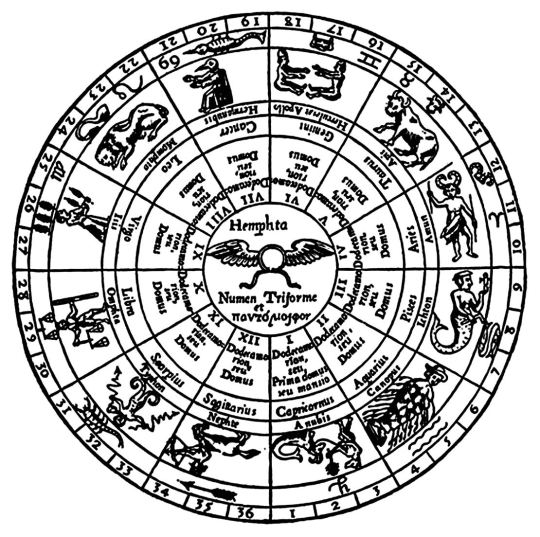
The Twelve Signs
The earliest recording of the twelve zodiac signs is dated to around 700 BC and found in Babylonian astronomy. The path of the sun in the heavens as observed from a geocentric point of view was subdivided into twelve equal coordinate zones. The first Babylonian calendar was keyed to the twelve signs, with the positioning of the sun during the vernal equinox marking the first sign, or Aries (known historically as the First Point of Aries).
The Twelve Signs
The earliest recording of the twelve zodiac signs is dated to around 700 BC and found in Babylonian astronomy. The path of the sun in the heavens as observed from a geocentric point of view was subdivided into twelve equal coordinate zones. The first Babylonian calendar was keyed to the twelve signs, with the positioning of the sun during the vernal equinox marking the first sign, or Aries (known historically as the First Point of Aries).
93 notes
·
View notes
Text
astronomy lesson
Freya wakes up on the roof in the middle of the night. Tartar tells her about its new hobby.
924 words, no general warnings
It's the middle of the night when Freya's jolted awake. The cold night air is almost freezing on her skin as she blinks, feeling a drip of that bioluminescent blue ink fall out of her eyes.
"Shit," her mouth moves on its own as Freya scrambles to get a better hold on a tile. "I knew I should've- damn it. It's fine, go back to sleep, Freya."
"Tartar? What are we doing on the roof?" Freya asks, watching as the AI pilots their body to a safer spot. If she cranes her neck, she can spot a pile of haphazardly placed furniture on the ground floor stacked up to presumably let the AI climb up here in the first place.
"It's- shit." Freya watches as Tartar keeps its grip on a roof tile, adjusting to ensure they don't fall. "I must apologize. I should just go back insi-"
"Hey, you're not in trouble or anything. I promise." She can feel the tension in their body lessen slightly. "I'm just curious, that's all. If it's too personal, I can just go back to sleep."
Tartar doesn't respond, but adjusts itself to sit upright on the roof. "I am aware that your neighbors consider this behavior odd, but… I am stargazing."
"You are?"
"Affirmative." The AI quiets down as it lays down on the roof, watching the stars.
"Huh. I didn't realize you took an interest in that sort of thing, Tartar."
The AI huffs out a laugh at that. "It is a little preposterous for an information bank to have 'interests,' but I suppose it is one."
The two of them share a quiet moment as Freya's eyes scan the stars. She can tell the AI is tracing something out, but isn't sure of the shape.
"What are you looking for?" Freya asks at last.
"Orion's belt. From there, Orion the Hunter." Tartar traces out the line with a finger, well aware that Freya can follow along that way. "Follow the bow's path, and you'll find Taurus."
"Who's Orion?"
"A hunter from Greek mythology. I believe you would call him a pathetic excuse of a hunter, though. He was not very valorous." Tartar lets out a chuckle at that, refocusing its gaze on the stars. "That isn't the only interpretation of the constellation, though. There's a different version of who that figure is that varies from human culture to human culture. Some cultures believe Orion's Belt to be sacred animals, or figures of importance in their respective religions."
"That's interesting. And Taurus?"
"Taurus is from the Western Zodiac. It takes the shape of a bull and is associated with many ancient human cultures. Sumerian, Akkadian, Assyrian, Babylonian… you name it."
Freya quiets as Tartar continues to trace out constellation after constellation, the AI giving a brief explanation of the shape and culture that named it. The vigor in which Tartar talks about each set of stars paints a picture in Freya's heart that she cannot deny.
Tartar… misses humanity, doesn't it?
"Your turn," the AI huffs out, giving control over Freya's right arm back to her.
"My turn?" Oh, the constellations. Freya's eyes scan the stars, searching.
"They don't need to be human era constellations. I am just curious as to what your society makes of the star map." With that, Tartar gets comfortable on the roof, adjusting their left hand behind their head.
"There's the Rainmaker," Freya says, tracing the gun's shape with a faded barely green finger. "In its path is Baby Zapfish, then the Great Zapfish."
"Mhm?"
"And then south of the Great Zapfish are the three clans, the Eel, the Shark, and the Manta Ray." She couldn't tell if the AI was actually paying attention to her, but she kept going anyway. "Along the edge of the three clans is the Pinkfish, and the King Pinkfish… then further south, the primordial ancestors."
"And those are?"
"The Kraken and The Dofleini. Presumably the first of our kind to walk the earth."
Freya let her free hand rest on her stomach, watching the stars twinkle faintly. There were so many things she wanted to ask Tartar, but she felt the moment was fragile enough as is to disturb the peace. So for now, she was fine with being quiet, watching the night sky with the remnant of humanity's mechanical creation.
"Thank you, Freya. I have updated my information banks accordingly and added the constellations you shared with me under the Mollusc Era of star maps."
"Hey, don't mention it. I figured you wanted to know. Plus, you're a pretty good teacher."
"Hmm?"
Freya grins as she watches the sky, searching for Orion again. "I didn't think I'd be learning astronomy from you. This is nice. Thanks for the lesson, genuinely."
Tartar makes a quiet hum in response, the AI not finding much to say to that.
"Can I make a request though?"
"What would that be?"
"Next time you come up here, at least bring a jacket."
"...Yes, fair enough. I could do that."
"Awesome. Now, can you tell me more about one of those ancient human cultures?"
"Hah, eager to learn, aren't you? Very well."
She could feel herself starting to drift off halfway through the history of the Ancient Babylonians, but Freya could tell that the AI was smiling. Was this back and forth conversation fulfilling for it? Did it make Tartar feel better, even if only marginally?
Freya wasn't sure, but as she drifted off to sleep, the AI's hand laced together with Freya's.
"Good night, inkling."
"Good night, Tartar."
79 notes
·
View notes
Text
I’d like to think Bruce got Batgirl! Cass and Robin! Tim to work together a lot so that they could learn from each other.
Cass is a good teacher, she and Tim fight and after each duel, she positions their bodied and repeats the movements slowly to show him exactly what he did wrong. At first Tim thinks he isn’t getting better, because he basically went from losing to Cass in 0.5 seconds to losing to Cass in 1.1 seconds but then he fights a non - Cass person and absolutely slays
Tim is a bad teacher at first. He’s one of those people who knows a subject so well that they treat complicated shit like it’s trivial. and he talks fast, very fast (autism). In their first lesson, while Tim is walking Cass through a crime scene he’d created , he’s showing her a broken clock and indicates this is a clue for the time of the murder- only to realize she can’t read clocks, he decides to skip the mathematical principles and focus on the “simple parts” so he starts explaining how long hand changes number every five minutes, but like, it doesn’t stand still then moves every five minutes, it’s always moving at a pace of 2pi*d/60 (in/ minutes). d, being the diameter of the clock in inches of course, and 60 because there are 60 minutes in an hour, fun fact! the division of the hour into 60 minutes and of the minute into 60 seconds comes from the Babylonians who used a sexagesimal system for mathematics and astronomy, isn’t that cool? and the short hand is 12 times slower than the long one cositmoveseveryhourandtherearetwentyfourhoursinadaybutit’sdevidedtotwosegmentsoftwelve except for military time that’s 24- and then he notices Cass’ eyes are glazed over so he just, brings a big clock and starts moving the hands himself, to indicate five minutes, ten, twenty, all without saying a word and Cass gets it. Tim buys her a big clock for her room and she likes to just look at how it moves. she likes clocks, clocks are cool.
while teaching Cass Tim learns to teach in her language.
#sorry this clock thing was stuck in my head#trust timmy to make something simple so complicated#tim drake#cassandra cain#cass cain#robin!tim#batgirl!cass#my headcanon of Tim may or may not be based on me#legit I was a terrible teacher and now I'm slightly better
62 notes
·
View notes
Text
مصير تابوت العهد
في قلب روايات الكتاب المقدس القديمة يكمن لغز أسر المؤرخين وعلماء الآثار واللاهوتيين على حد سواء: مصير تابوت العهد، أو تابوت العهد. هذه القطعة الأثرية المقدسة، والتي تحتوي وفقا للتقاليد على جداول الوصايا العشر، اختفت بشكل غامض عندما غزا البابليون القدس عام 587 قبل الميلاد.
قصة الفلك هي قصة متشابكة مع الإيمان والتاريخ والغموض. كان التابوت، الموجود أصلاً في هيكل سليمان في القدس، يرمز إلى الحضور الإلهي وعهد الله مع شعبه. ومع ذلك، أصبح مصيرها غير مؤكد بعد تدمير الهيكل الأول على يد البابليين. منذ ذلك الحين، أصبح مكان وجوده موضوع تكهنات وأساطير.
ظهرت نظريات مختلفة على مر القرون. يقترح أحدهم أنه تم نقلها إلى بابل مع كنوز أخرى من الهيكل المنهوب. وهناك نظرية شائعة أخرى تدعي أنه تم إخفاؤها من قبل الكهنة المخلصين قبل الغزو، ربما في مكان سري أسفل جبل الهيكل أو في الكهوف القريبة.
ومن أروع الفرضيات أن التابوت نُقل إلى إثيوبيا، حيث يقال إنه موجود حتى يومنا هذا، محفوظًا في كنيسة القديسة مريم العذراء في صهيون في أكسوم. ومع ذلك، لم تسمح الكنيسة أبدًا بالتحقق العلمي لتأكيد هذا الادعاء.
وفي العصر الحديث، لا يظل موضوعًا للبحث الأكاديمي فحسب، بل ألهم أيضًا العديد من الأعمال الخيالية والأفلام، كونه يمثل المقدس والغامض.
ويظل مصيرهم النهائي لغزا، يمثل تقاطع الإيمان والتاريخ، وهو لغز لا يزال يشكل تحديا لأولئك الذين يسعون إلى كشف أسرار الماضي. مع استمرار عمليات البحث وتطور النظريات، يظل تابوت العهد رمزًا دائمًا للمجهول، وهو وعاء ذخائر مقدس ملفوف بعباءة التاريخ والأسطورة.

The fate of the Ark of the Covenant
At the heart of ancient biblical narratives lies a mystery that has captivated historians, archaeologists, and theologians alike: the fate of the Ark of the Covenant, or Ark of the Covenant. This sacred artifact, which according to tradition contains the tables of the Ten Commandments, mysteriously disappeared when the Babylonians conquered Jerusalem in 587 BC.
The story of astronomy is one intertwined with faith, history, and mystery. The Ark, originally located in Solomon's Temple in Jerusalem, symbolized the divine presence and God's covenant with his people. However, its fate became uncertain after the destruction of the First Temple by the Babylonians. Since then, his whereabouts have been the subject of speculation and legend.
Various theories have emerged over the centuries. One suggests that it was taken to Babylon with other treasures from the looted Temple. Another popular theory claims that it was hidden by loyal priests before the invasion, perhaps in a secret location beneath the Temple Mount or in nearby caves.
One of the most fascinating hypotheses is that the coffin was transported to Ethiopia, where it is said to exist to this day, preserved in the Church of St. Mary the Virgin of Zion in Axum. However, the Church has never allowed scientific verification to confirm this claim.
In modern times, it not only remains a subject of academic research, but has also inspired many works of fiction and films, representing the sacred and the mysterious.
Their ultimate fate remains a mystery, representing the intersection of faith and history, a mystery that continues to pose a challenge to those seeking to uncover the secrets of the past. As searches continue and theories develop, the Ark of the Covenant remains an enduring symbol of the unknown, a sacred reliquary wrapped in the cloak of history and legend.
13 notes
·
View notes